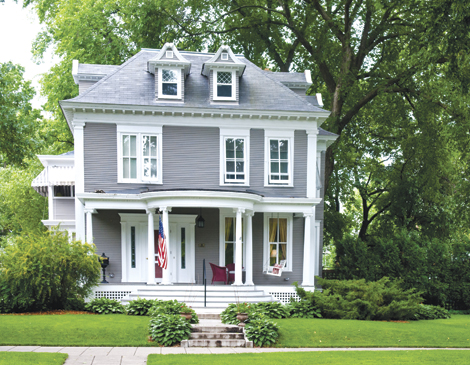Home restoration is a labor of love — one that can break a budget, monopolize every free hour and test the patience of even the most dedicated do-it-yourselfer. The Cleveland Restoration Society’s Heritage Home Program aims to make rehabilitating houses that are at least 50 years old easier by providing experts who can answer questions about repairs, contractors and more. Program associate Elizabeth Cardarelli offers a sampling of their knowledge.
Secure the exterior. Make sure the foundation and roof are sound, mortar is properly pointed, and paint is in good condition. “The most important thing is to make sure that the exterior is sealed properly so that weather is not getting in, especially water,” she says.
Repair rather than replace original windows. Cardarelli compares a home’s windows to the eyes in a human face, and thus key features to the historic look and feel. “Window restoration is usually much less expensive than replacing all of the windows in the home,” she adds. Individual components can be repaired, restored or replaced, while installing storm windows can improve energy efficiency.
Stay true to the era and architectural style. Ideally, replace materials with like materials: wood siding with wood siding, tongue-and-groove porch flooring with tongue-and-groove porch flooring, slate shingles with slate shingles. Pick paints in colors typically used when the house was built. For example, the pure white most people consider a standard was rarely, if ever, used during the Victorian era, even for painting trim, Cardarelli notes. Color palettes were more elaborate. “You can put up to three or four colors on the home, depending on how much intricate detail there is,” she says.
Confirm that mechanical systems are safe. The old knob-and-tube electrical systems are considered safe if they have been paneled properly, according to Cardarelli. “You just cannot insulate around it,” she says. “The knobs and tubes have to be able to breathe.”
Repair or re-create interior architectural details. Cardarelli even suggests making minor repairs to plaster walls instead of replacing them with drywall. Program experts can help homeowners determine which details are original to the home or, if it has been completely remodeled, suggest appropriate crown moldings, wainscoting, fireplace mantels and other details — plus contact information for craftsmen who make or restore them. It’s worth the effort, Cardarelli says, even if the makeover seems at odds with the details. “We have had homeowners do a full open floor plan in their Victorian homes,” she says, “but still maintain the historic character on the inside.”




